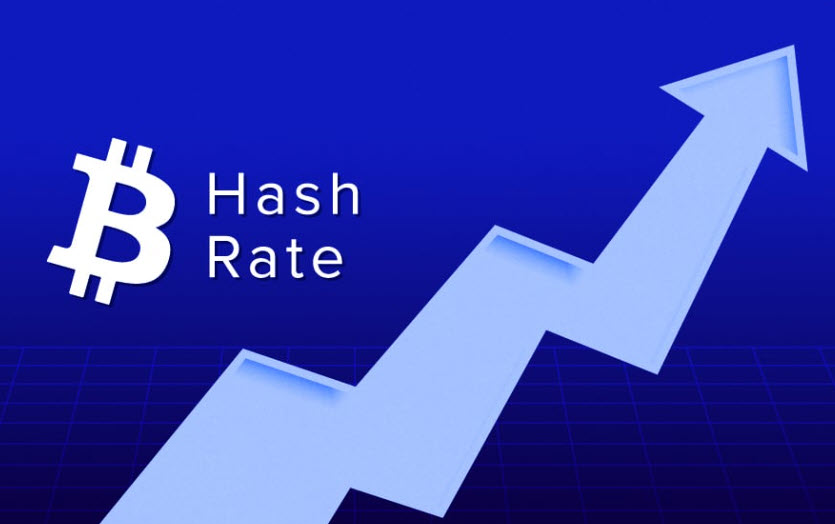What is Hash Rate?

Introduction
Cryptocurrencies are built on advanced technology and groundbreaking ideas. One of the most essential yet often overlooked components is hashrate—a key metric that plays a vital role in securing and maintaining blockchain networks, especially those using Proof-of-Work (PoW) consensus mechanisms like Bitcoin. In this article, we’ll break down what hashrate means, why it matters, and how it contributes to the strength and security of cryptocurrency networks.
What Is Hashrate?
Hashrate represents the total computational power used by miners to validate transactions and secure a blockchain. Essentially, it measures how many hash calculations are performed in a specific amount of time. A hash is a fixed-length string of characters that uniquely represents data of any size.
Different cryptocurrencies use various hashing algorithms to generate these hashes. You can think of these algorithms as sophisticated random generators, each producing unique outputs from any given input. For example, Bitcoin uses the SHA-256 algorithm to produce distinct hash values for every new block.
How Hashrate Works
To add a new block of transactions to the blockchain, miners must solve a complex cryptographic puzzle. This involves finding a hash that meets certain criteria—specifically, one that is equal to or lower than a target value. Miners adjust a variable called a nonce to generate different hashes until they find one that fits.
This process is similar to a lottery system: each hash is like a ticket, and the more hashing power a miner has, the more tickets they can “buy,” increasing their chances of winning. Once a miner finds a valid hash, they earn newly minted coins and transaction fees. The new block is then added to the blockchain, making it harder to alter or reverse any past transactions.
Why Hashrate Matters for Network Security
Hashrate is a crucial indicator of a blockchain’s security. A higher hashrate means more computational resources are being devoted to mining, which in turn makes the network more resistant to attacks.
One major threat is the 51% attack, where a malicious entity controls the majority of the network’s hashrate. This could allow them to manipulate transaction history, such as double-spending coins. However, as the hashrate increases, the cost and resources required to execute such an attack become prohibitively high, thereby protecting the network’s integrity.
The Growth of Bitcoin’s Hashrate
Bitcoin’s hashrate has grown exponentially since its launch. In its early days, mining could be done with a simple home computer. But as Bitcoin gained popularity, more powerful equipment became necessary, leading to the rise of large-scale mining operations.
Today, Bitcoin’s network boasts a hashrate exceeding 377 exahashes per second (EH/s)—a testament to both the technological progress in mining hardware and the decentralized strength of the network.
Why Hashrate Is Important for Miners
For miners, hashrate directly affects profitability. The more hashing power they contribute, the better their odds of solving the cryptographic puzzle and earning rewards. As the network’s total hashrate increases, the difficulty of mining adjusts upward, pushing miners to invest in ever more powerful equipment to stay competitive.
This drive for efficiency fuels innovation in mining hardware and boosts the network’s overall security and decentralization. A strong, decentralized hashrate also signals a robust and trustworthy network, which can increase investor confidence and attract more participation.
How Does Hashrate Influence Bitcoin’s Price?
While there isn’t a direct one-to-one relationship between Bitcoin’s hashrate and its market price, several key factors link the two. A rising hashrate strengthens the security of the Bitcoin network, which can boost investor trust and, in turn, increase market demand. This surge in demand may positively affect Bitcoin’s price.
On the flip side, a higher hashrate also means increased computational requirements, which drives up mining costs. As a result, miners may set higher break-even price thresholds, potentially influencing short-term price movements.
Additionally, as more miners compete and succeed in earning Bitcoin rewards, many will need to sell a portion of their earnings to cover operational expenses. This can lead to increased selling pressure, which may affect price stability.
At the same time, a growing hashrate signals strong miner commitment and confidence in the network’s future. This commitment can enhance overall market sentiment, attract new investors, and possibly contribute to rising demand and price appreciation.
It’s important to remember that Bitcoin’s price is shaped by a wide range of factors—including macroeconomic conditions, investor sentiment, and regulatory developments. Hashrate is just one component of this complex equation.
Conclusion
Understanding hashrate is essential for grasping how Bitcoin’s blockchain functions and remains secure. It plays a foundational role in protecting the network from threats and maintaining transaction integrity.
Over the years, Bitcoin’s hashrate has climbed significantly, underscoring the dedication of miners and the robustness of the system. For miners, it not only affects profitability but also plays a crucial role in securing and decentralizing the network.
Although the connection between hashrate and Bitcoin’s price isn’t linear, a higher hashrate generally indicates stronger network security, increased confidence, and potential for higher demand. However, it also brings higher costs and the possibility of increased sell pressure.
By examining the interplay between hashrate, miner behavior, investor sentiment, and broader economic factors, participants in the crypto market can gain deeper insights and make more informed decisions in a dynamic environment.


